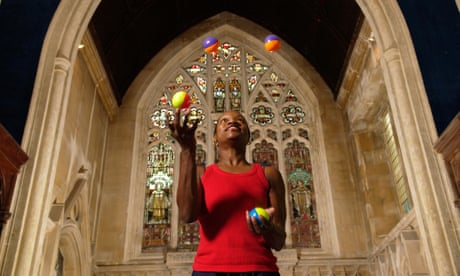Timothy Huffman and Ira Sims
2012 - Photography (Photography)
40 x 64 inches
Dawoud Bey
On 15 September 1963 members of the Ku Klux Klan blew up the 16th Street Baptist Church in Birmingham Alabama up using dynamite. Four African American girls were killed, and 22 other people were injured. Two African American boys were killed in related violence that day. No prosecutions were pursued until 1977 when one member of the Klan was convicted for first-degree murder. In 2001 and 2002 two other men were further convicted. The bombing of this church marked a turning point in the struggle for civil rights and contributed to support for the passage of the Civil Rights Act of 1964. In 2005 American photographer Dawoud Bey visited Birmingham Alabama to research the possibility of commemorating this terrible event. He spent the next seven years meeting people in the community and in 2012 began a series of paired portraits of members of the church community. Each pair depicts a young person of the age of those killed in 1963 and a person of the age those children would have been fifty years later in 2013. Bey’s photographs make immediately apparent the loss of four young lives and the passage of stolen time, while at the same time highlighting issues of on-going racism and violence against the African American population; Bey began this project the same year that Tryvon Martin was killed. Half of the photographs were taken at the Bethel Baptist Church and the other half at the Birmingham Museum of Art, an institution that restricted admission to African Americans to once a week through the early 1960s. In one of the 16 diptychs Timothy Huffman and Ira Sims are photographed in the museum in front of Rococo paintings by Christophe Huet from circa 1750 depicting picnic scenes with coffee and hot chocolate being served by monkeys, a code for African slaves. The contrast between the frivolity of the scene and the racist message with the seriousness of the sitters and the reason for their depiction is significant.
Dawoud Bey is an American photographer and professor and Distinguished Artist at Columbia College Chicago. Growing up in the 1960s, he was deeply influenced by the activist slogan “if you’re not part of the solution, you’re part of the problem”, describing his work as an attempt to contest assumptions and challenge the status quo. Hailed as the acclaimed portraits of African American life, his earliest work depicted the day-to-day of people living in Harlem, later photographing processes of gentrification in the neighborhood with the series ‘Harlem Redux’. Throughout his practice he has often featured young people and describes his methodology as one that is collaborative in nature and rooted in community. Pushing the political potential of photography and producing images from a highly subjective perspective, he sees portraiture as a practice of identification and empathy, with the medium acting as an accessible means of describing human experience.
Colors:
Related works found in the same semantic group
» see more

© » KADIST
Titus Kaphar
2016Although the objects depicted in Titus Kaphar’s diptych 2016/1963 might not be immediately recognizable, the work’s title and the inscriptions ‘Alabama 1963’ and ‘North Dakota 2016’ reveal their use as tools of brutal force...



